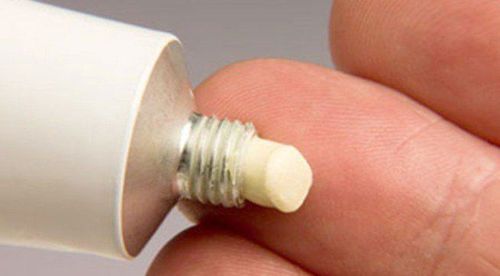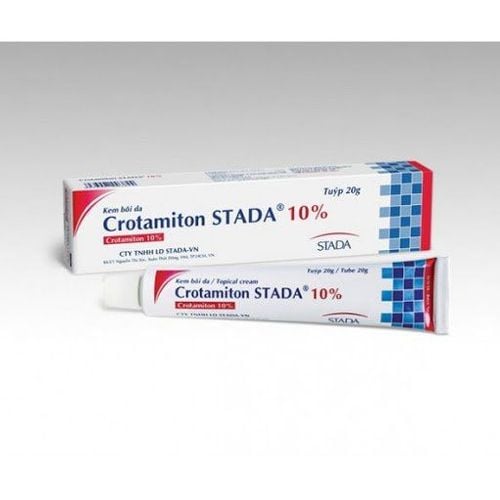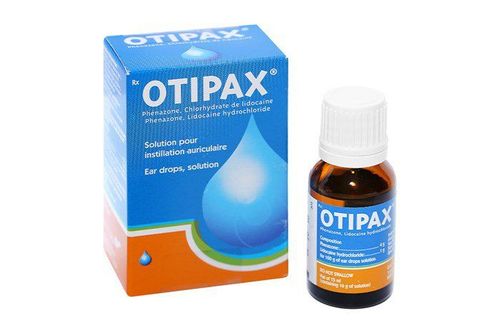This is an automatically translated article.
Antibiotics are a group of drugs used specifically for bacterial infections. There are many different antibiotic active ingredients, including the antibiotic Cephalexin, which is the main ingredient of Cefakid 250mg. So what is Cefakid and how is it indicated?1. What is Cefakid?
Cefakid is manufactured by Pymepharco Joint Stock Company, prepared in the form of nuggets for oral use with the packing specification of 12 packs per box, each pack has a weight of 3g.Each Cefakid drug pack includes the following ingredients:
Cephalexin antibiotic content 250mg (in the form of Cephalexin monohydrate); Some excipients are just enough for 1 pack.
2. Effects of Cefakid 250mg
The active ingredient Cephalexin in Cefakid is a semi-synthetic antibiotic belonging to the 1st generation Cephalosporin group. The mechanism of killing bacteria of Cefakid drug is to inhibit the synthesis of bacterial cell membranes through binding to 1 or more Penicillin-binding protein, thereby leading to Peptidoglycan inhibition. Under the action of the antibiotic Cephalexin, the cell wall autolytic enzymes Murein Hydrolase and Autolysin will directly destroy bacteria that have inhibited cell wall assembly.The spectrum of action of Cefakid includes many gram-positive aerobic cocci, but the activity against Gram-negative bacteria is very limited.
3. Indications of the drug Cefakid
Cefakid drug product is indicated for the following infections:Respiratory tract infections, including patients with infectious bronchiectasis or acute and chronic bronchitis; Ear, nose and throat infections such as tonsillitis , sinusitis, pharyngitis or otitis media; UTIs, including prostatitis, cystitis or Cefakid used to prevent recurrent infections; Some skin and soft tissue infections are caused by bacteria that are sensitive to Cephalexin; Osteoarthritis due to susceptible bacteria; Prophylaxis of bacterial endocarditis; An alternative to penicillin after oral procedures or for patients allergic to penicillin.
4. How to use Cefakid
Cefakid is produced in the form of nuggets for oral use, patients need to dissolve the drug nuggets with 15-25ml of water before drinking.Specific dosage of Cefakid 250mg is recommended as follows:
Adults and children over 15 years old: Depending on the level of infection, the patient has an appropriate dose, usually 1-2 packs of Cefakid (equivalent to 1 - 2 packets of Cefakid). 250 - 500mg Cephalexin) orally every 6 hours. Note that the maximum dose of Cephalexin is 4g/day for severe infections or less sensitive to the drug; Patients with tonsillitis or pharyngitis can take 2 sachets of Cefakid every 12 hours for a minimum of 10 days; Osteoarthritis or respiratory tract infections: Patients take 1 sachet of Cefakid every 6 hours if the disease is mild to moderate. Patients with severe infections or less susceptible to Cephalexin can receive higher doses of Cefakid; Skin and soft tissue infections: Take 2 sachets of Cefakid every 12 hours; Urinary tract infections such as cystitis uncomplicated: Patients take 2 sachets of Cefakid every 12 hours for 1-2 weeks. The recommended dose of Cephalexin for children over 1 year old:
The usual dose is 25-100mg/kg/day, divided into 3-4 doses and the maximum dose is 4g/day; Acute otitis media: Cephalexin dose 75-100mg/kg/day, divided into 4 times; Tonsillitis, pharyngitis, dose 25-50mg/kg/day, divided into 2 doses, 12 hours apart for at least 10 days; Skin and soft tissue infections: Cephalexin dose 25-50mg/kg/day, divided into 2 doses every 12 hours; Dosage of Cefakid drug for patients with renal failure:
Patients do not need to adjust the dose when the creatinine clearance is above 40ml/min; Creatinine clearance from 11-40ml/min: 2 sachets of Cefakid orally every 8-12 hours; Creatinine clearance from 5 to 10ml/min: 1 sachet of Cefakid orally every 12 hours; Creatinine clearance less than 5ml/min: 1 sachet of Cefakid orally every 12-24 hours. In case of using Cefakid in excess of the recommended dose, it should be handled as follows:
Symptoms of Cephalexin overdose include nausea, vomiting and diarrhea; When taking an overdose of Cefakid and having serious side effects, the patient should immediately go to the hospital for timely treatment.
5. Contraindications of Cefakid
The drug Cefakid 250mg is not indicated for the following cases:Patients with a history of allergy to Cephalexin or any other ingredients in the drug; Patients with a history of anaphylaxis to penicillin group antibiotics; People with severe reactions mediated by IgE immune globulin.
6. Undesirable effects of the drug Cefakid
The reports when using Cefakid in clinical showed the following undesirable effects:The most common is nausea or diarrhea; Some patients receiving Cefakid experienced uncommon adverse events such as increased eosinophil counts, urticaria, pruritus, skin rash, or reversible elevations in liver enzymes. Some people experience confusion, anxiety disorders, dizziness, headaches, or hallucinations; Rare adverse effects of Cefakid include anaphylaxis, headache, fatigue, decreased platelet or neutrophil counts, gastrointestinal disturbances, pseudomembranous colitis, erythema multiforme, Stevens syndrome -Johnson, toxic epidermal necrolysis, hepatitis, vaginal infection or genital pruritus. Patients experiencing side effects of pseudomembranous colitis should stop using Cefakid and seek appropriate treatment If any of the above side effects or other unusual symptoms appear during the treatment period. Cefakid should immediately notify your doctor or pharmacist.
7. Drug interactions of Cefakid 250mg
Caution when combining Cefakid with the following products:Drugs causing nephrotoxicity such as Aminoglycoside antibiotics, strong diuretics such as Ethacrynic Acid, Furosemide and Piretanid when used with Cefakid cause more effects on kidney function; Oestrogens in oral contraceptives are reduced when cefakid is used concurrently; Cefakid slows absorption of Cholestyramine; Probenecid increases the half-life and serum concentrations of Cephalexin; Agents that cause uric aciduria may potentiate the effects of Cefakid, therefore dose adjustment is necessary. To ensure safety and effectiveness, patients should tell their doctor about all medications, health foods, and other illnesses they have before being treated with Cefakid.
8. Notes when using the drug Cefakid
Use of Cefakid in Pregnancy and Lactation:Pregnant Women: Experimental studies and clinical experience have not reported any toxicity or teratogenic potential of Cefakid. . However, to ensure safety for the fetus, pregnant women only use Cefakid when absolutely necessary; Lactating female patients: Small amounts of Cephalexin may be excreted in human milk, therefore consideration should be given to either short-term discontinuation of breast-feeding or no use of Cefakid. Some side effects such as headache, dizziness may occur during the use of Cefakid. Therefore, when experiencing the above symptoms, the patient must not drive or operate machinery.
Cefakid storage conditions:
Temperature below 30 degrees Celsius; Avoid direct sunlight; Keep out of sight and reach of children.
Please dial HOTLINE for more information or register for an appointment HERE. Download MyVinmec app to make appointments faster and to manage your bookings easily.













